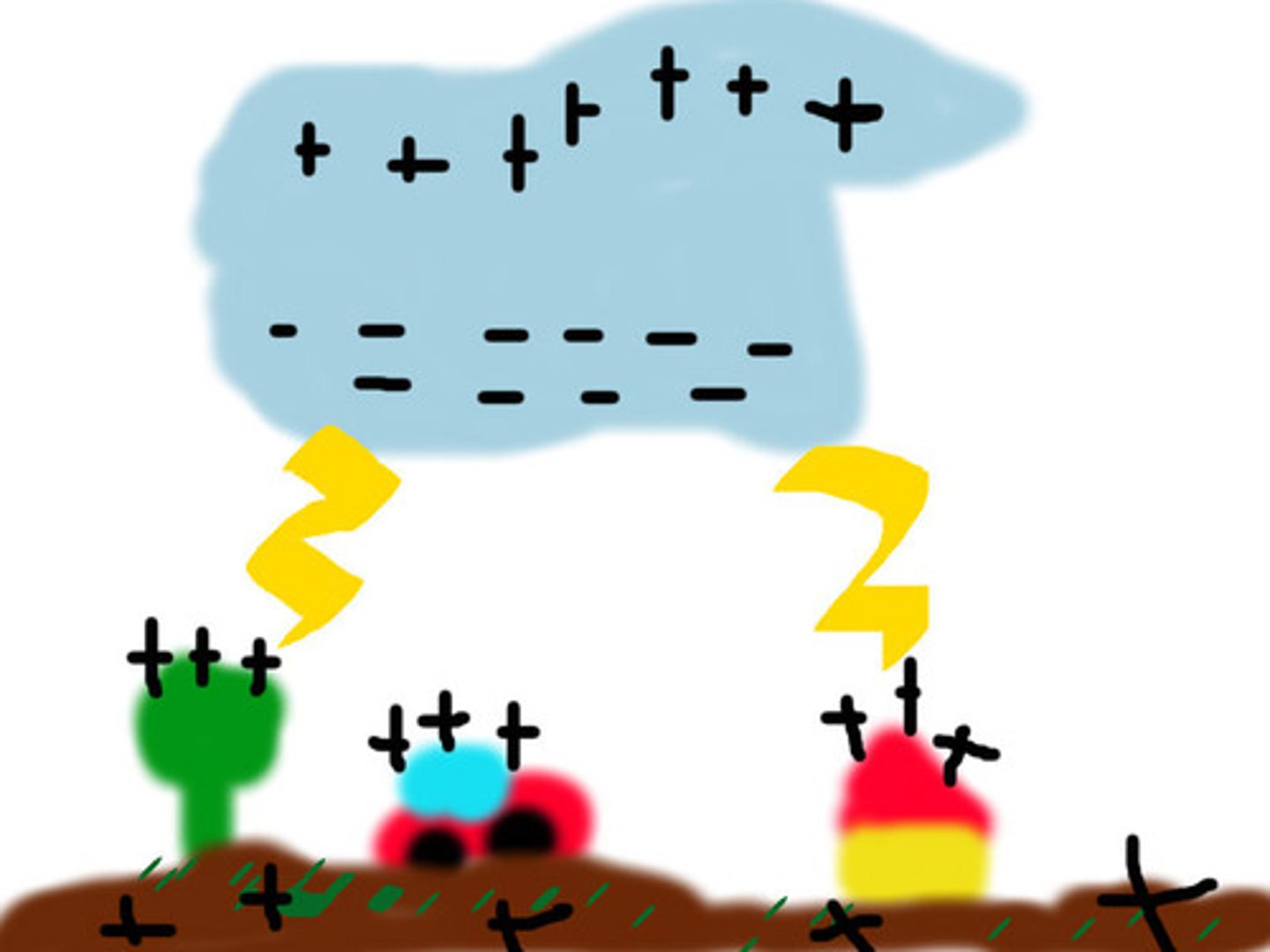Grade 9 Electricity Unit Review
1/25
There's no tags or description
Looks like no tags are added yet.
Name | Mastery | Learn | Test | Matching | Spaced |
|---|
No study sessions yet.
26 Terms
Ammeter
Instrument used to measure current in a circuit.
Voltmeter
Measures potential difference (voltage) between two points in a circuit.
Circuit Breaker
Safety device that opens the circuit if current is too high; can be reset.
Fuse
Similar to a circuit breaker, but must be replaced once blown.
Conductor
Material where electrical charges move easily (e.g. metals).
Insulator
Material where charges do not move easily (e.g. rubber, plastic).
Load
Converts electrical energy into other forms (e.g. light, heat).
Source
Provides energy (e.g. battery, generator).
Current (I)
The flow of electric charge in a circuit.
Resistance (R)
The opposition to the flow of current.
Potential Difference (V)
The energy per unit charge, also called voltage.
Grounding
Safely directs excess charge into the Earth.
Charging by Contact
Touching a charged object to a neutral one to transfer charges.
Charging by Induction
Bringing a charged object near (not touching) to cause a redistribution of charges.
Conductivity
Indicates how easily charges move in a material.
Electroscope
Device that tests if an object is charged.
Series Circuit
One path for current to flow.
Parallel Circuit
Two or more paths for current.
Renewable Energy
Can be replaced within a human lifetime (e.g. solar, wind).
Non-renewable Energy
Cannot be replenished quickly (e.g. coal, oil).
EnerGuide Label
Shows estimated energy use of an appliance in a year.
ENERGY STAR® Label
Identifies energy-efficient products.
Ohm's Law
V = I×R
Voltage (V)
Measured in volts (V).
Power
Measured in watts (W).
How is Lightning formed?
